‘Alopeke
evolution of an instrument line and new capabilities
Nic Scott
NASA ARC

SEG 2018
Labeyrie
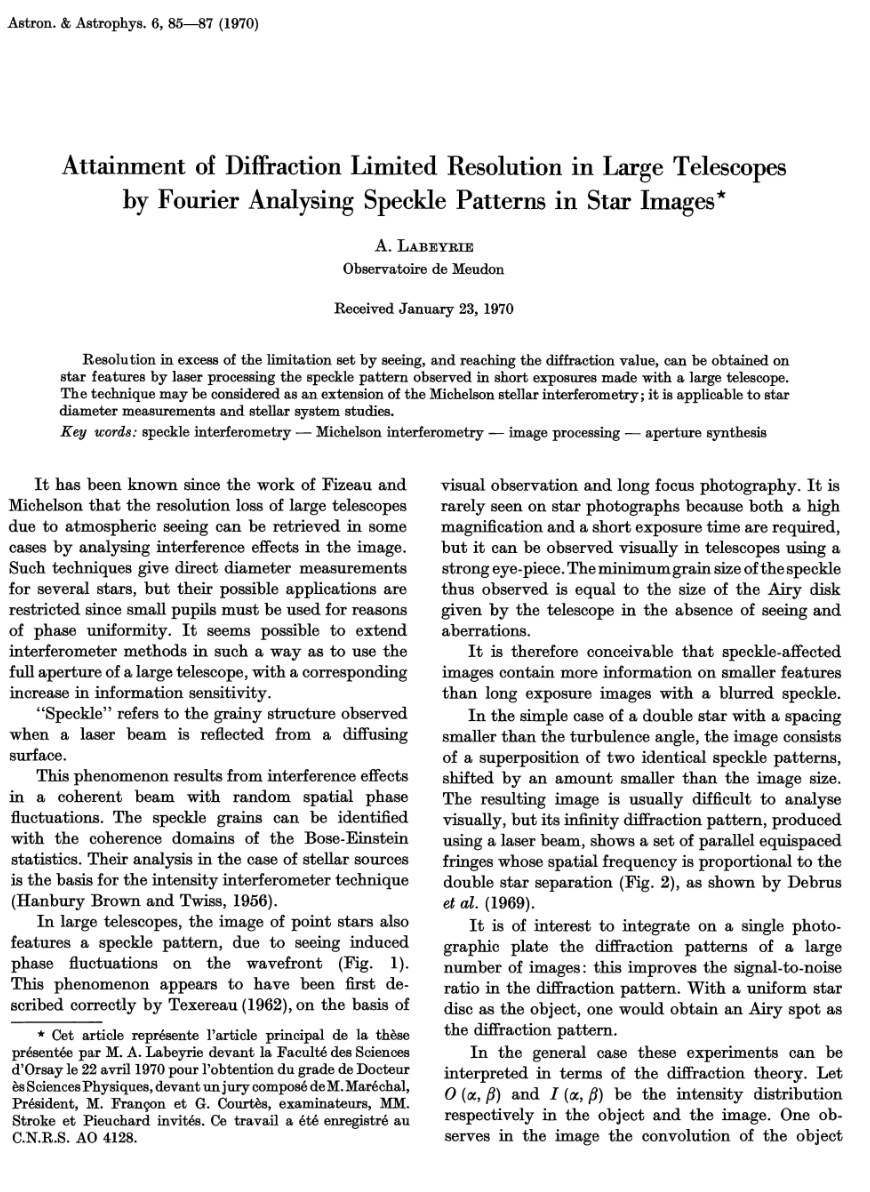
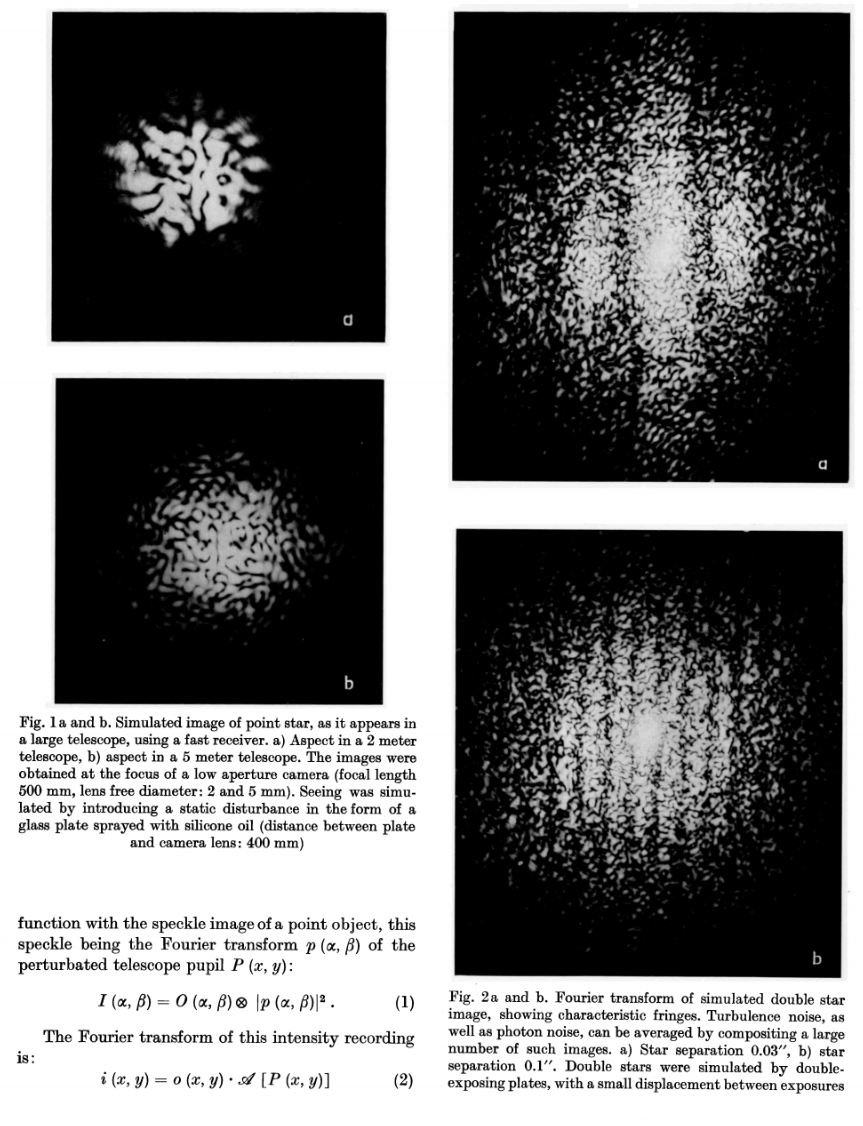
1970
Text
long exposure
speckles blur
produce Airy pattern
true images are impossible, only centrosymmetric objects can be reconstructed
speckle pattern is the Fourier transform of telescope pupil
Fourier autocorrelation of speckles
modulus
(time-averaged intensity)
Weigelt & Lohmann
1977-1983
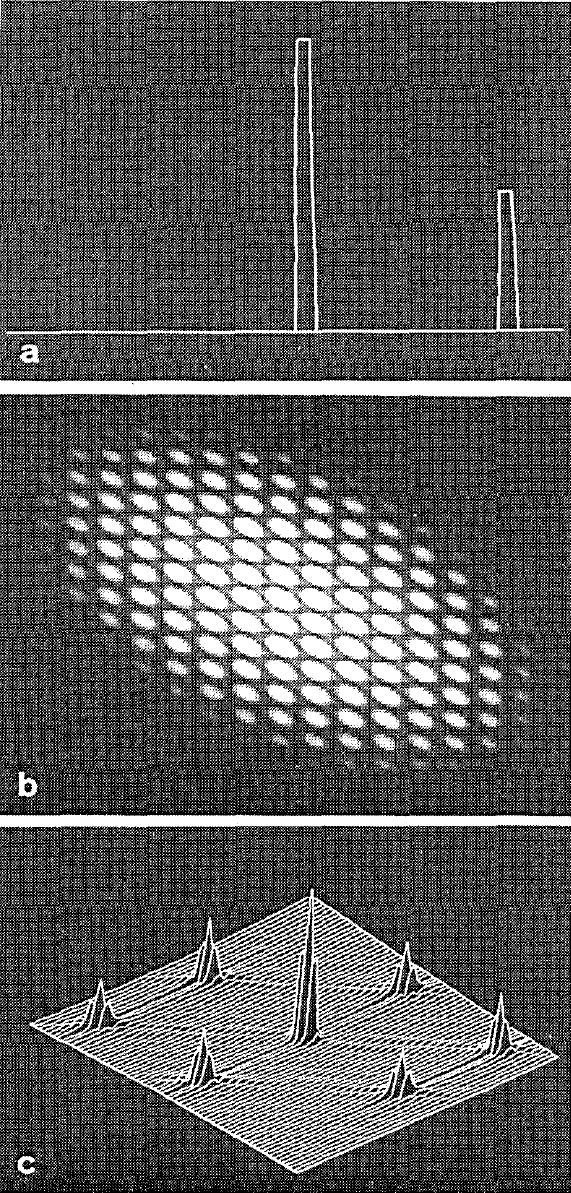
double star simulation
bispectrum modulus
triple correlation
record PSF of object
produce synthetic reference star by shifting the speckle pattern
phase is preserved
Speckle masking/triple correlation theory/bispectral analysis, a 3rd order correlation
deconvolve
true images
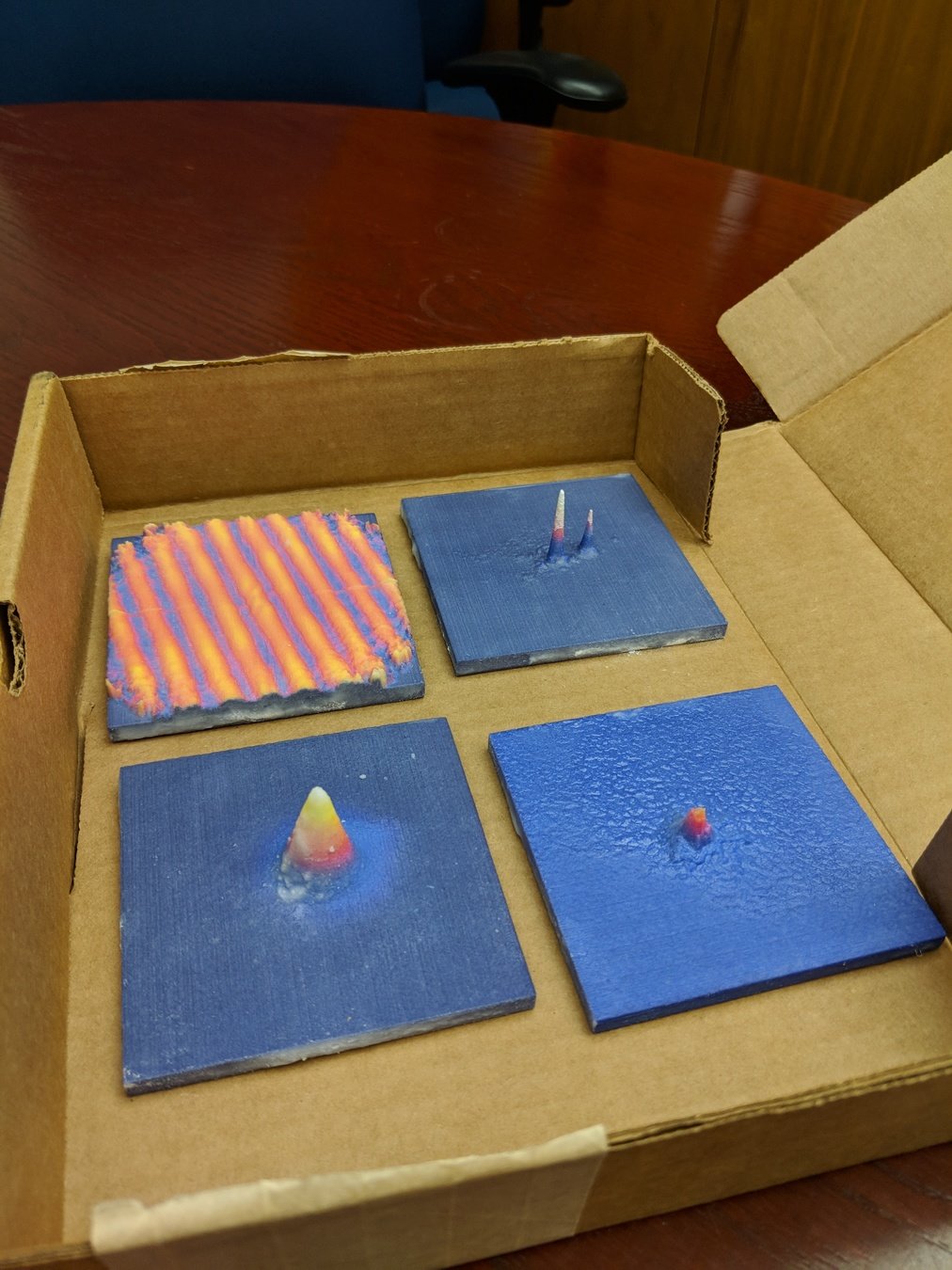



1s
40s
20min
Publications

Text
blue bars are refereed citations to refereed papers
green bars are non-refereed citations to refereed papers
SAO/NASA ADS “Bumblebee” search: ‘‘speckle’’ - ‘‘speckle noise’’
- limited to astronomy and refereed
- removed AO speckle noise references
- excluded AO and spectroscopic techniques
- constrained to 1970+ sorted by citation count
This search returned 1,139 papers with 24,181 total citations
rise of EMCCDs & start of large speckle survey programs (& Kepler)?
Title Text
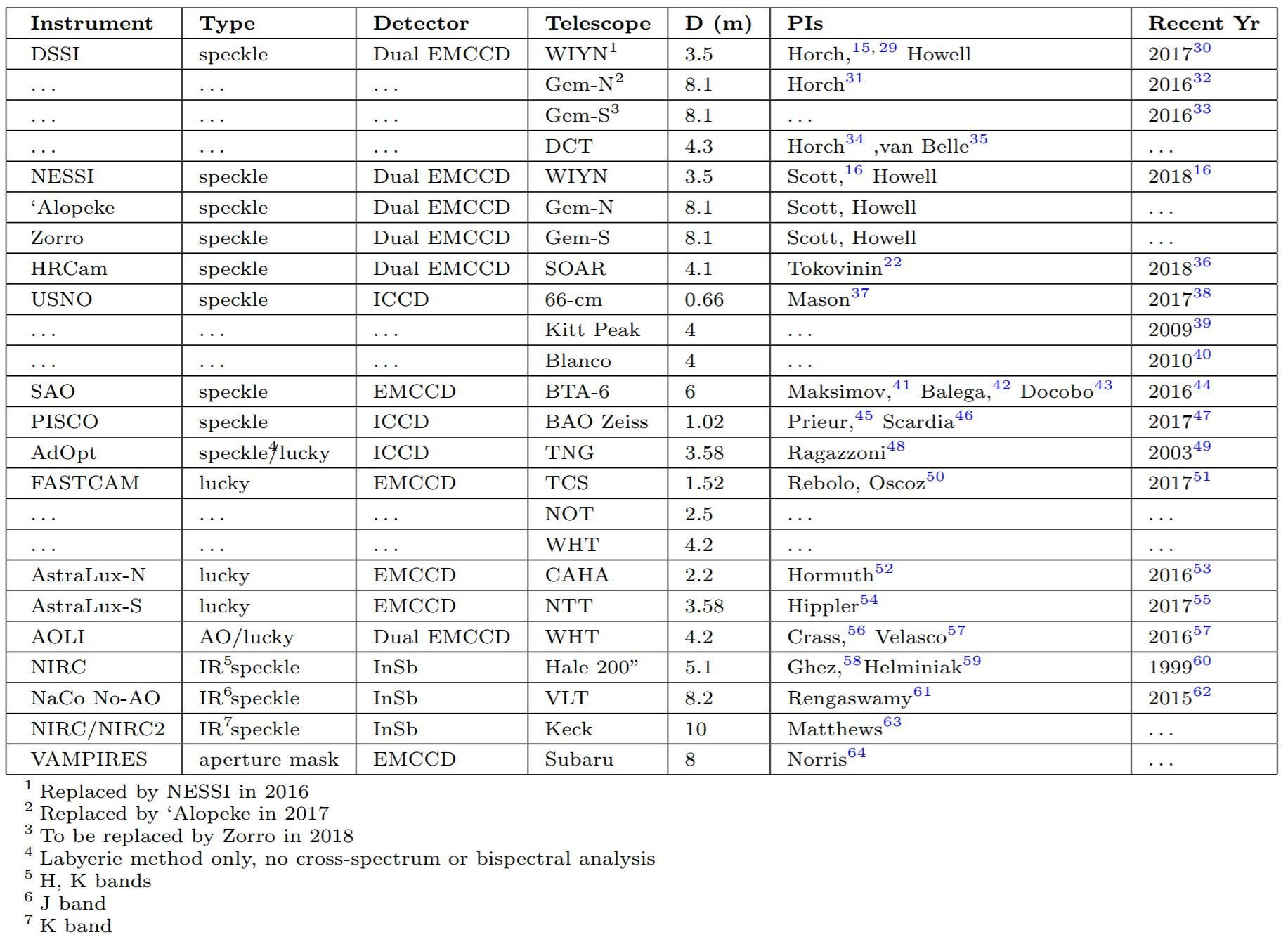
Text
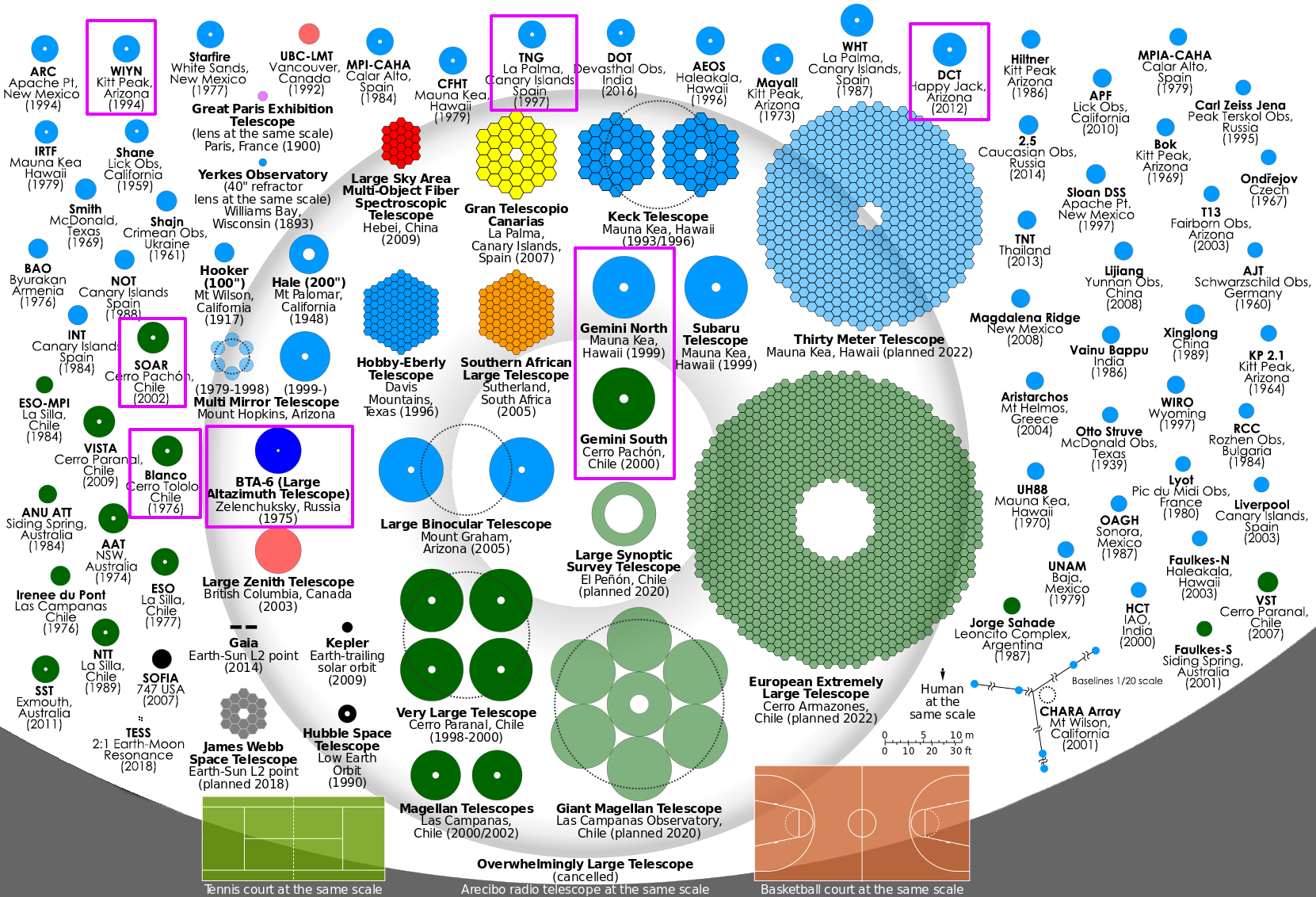





DSSI/NESSI/`Alopeke/Zorro






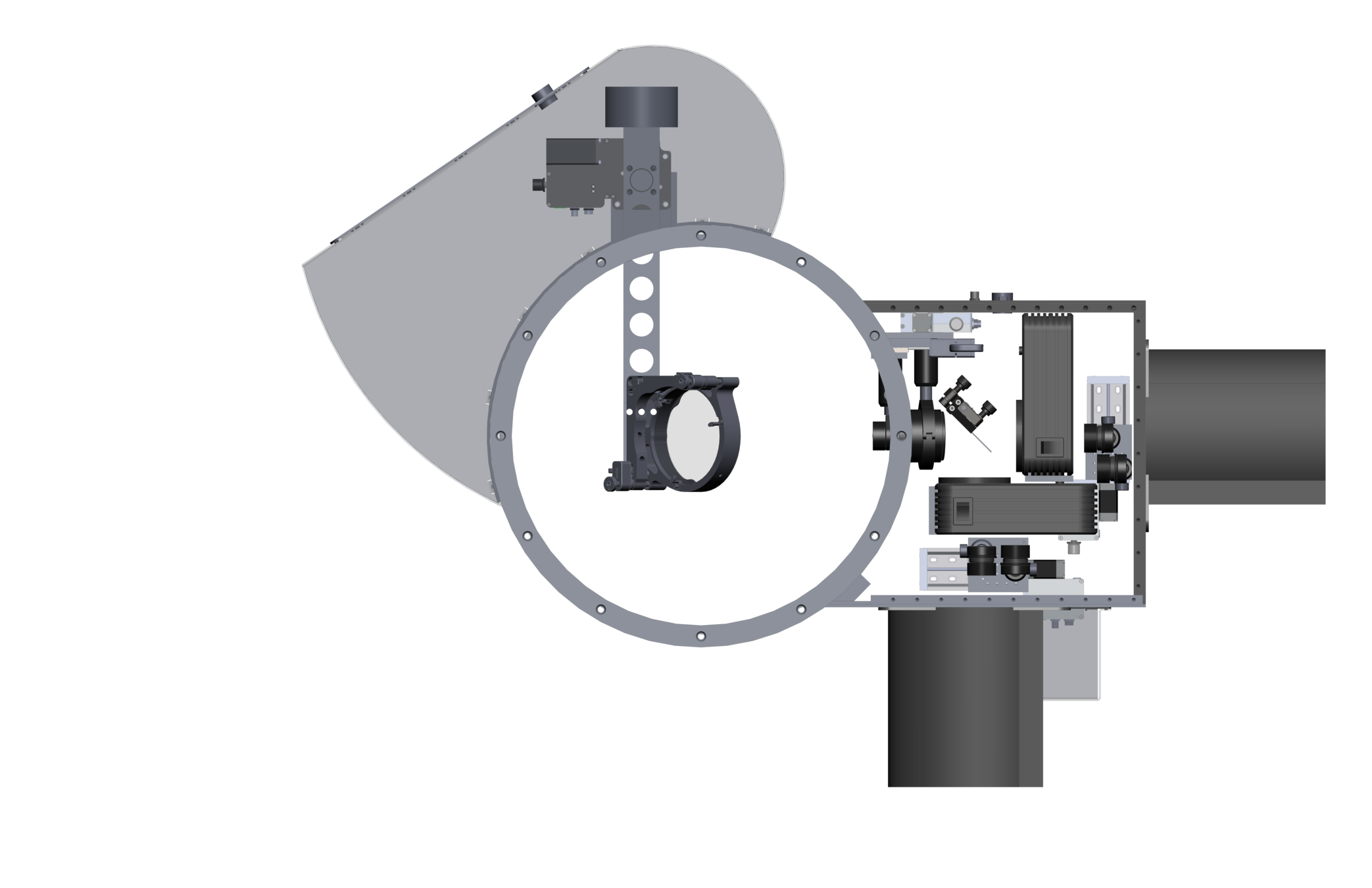


mag limit ~17


0.011'' @u
0.026'' @832nm
0.025'' @u
0.060'' @832nm
6.7''
60''
19''
56''
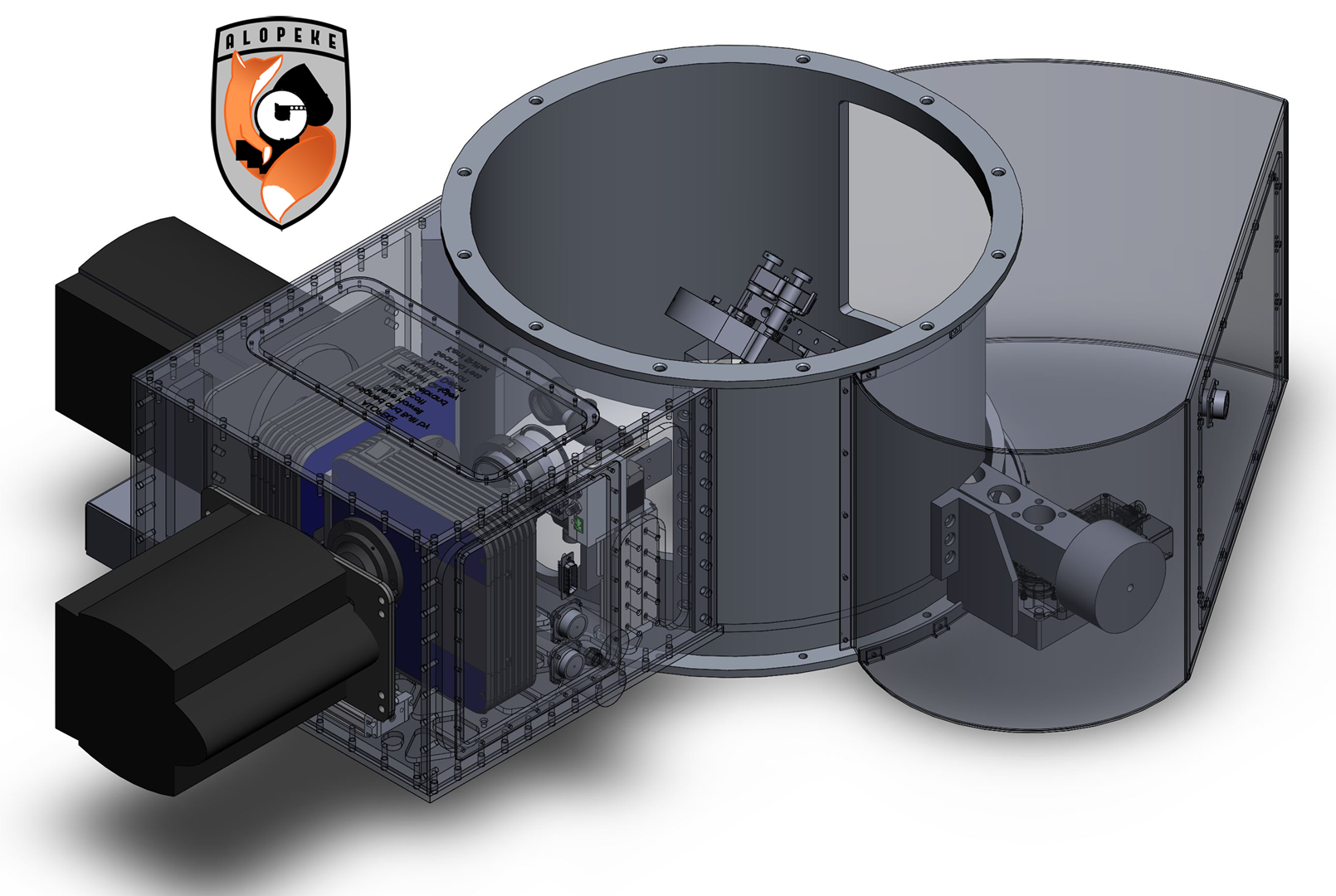
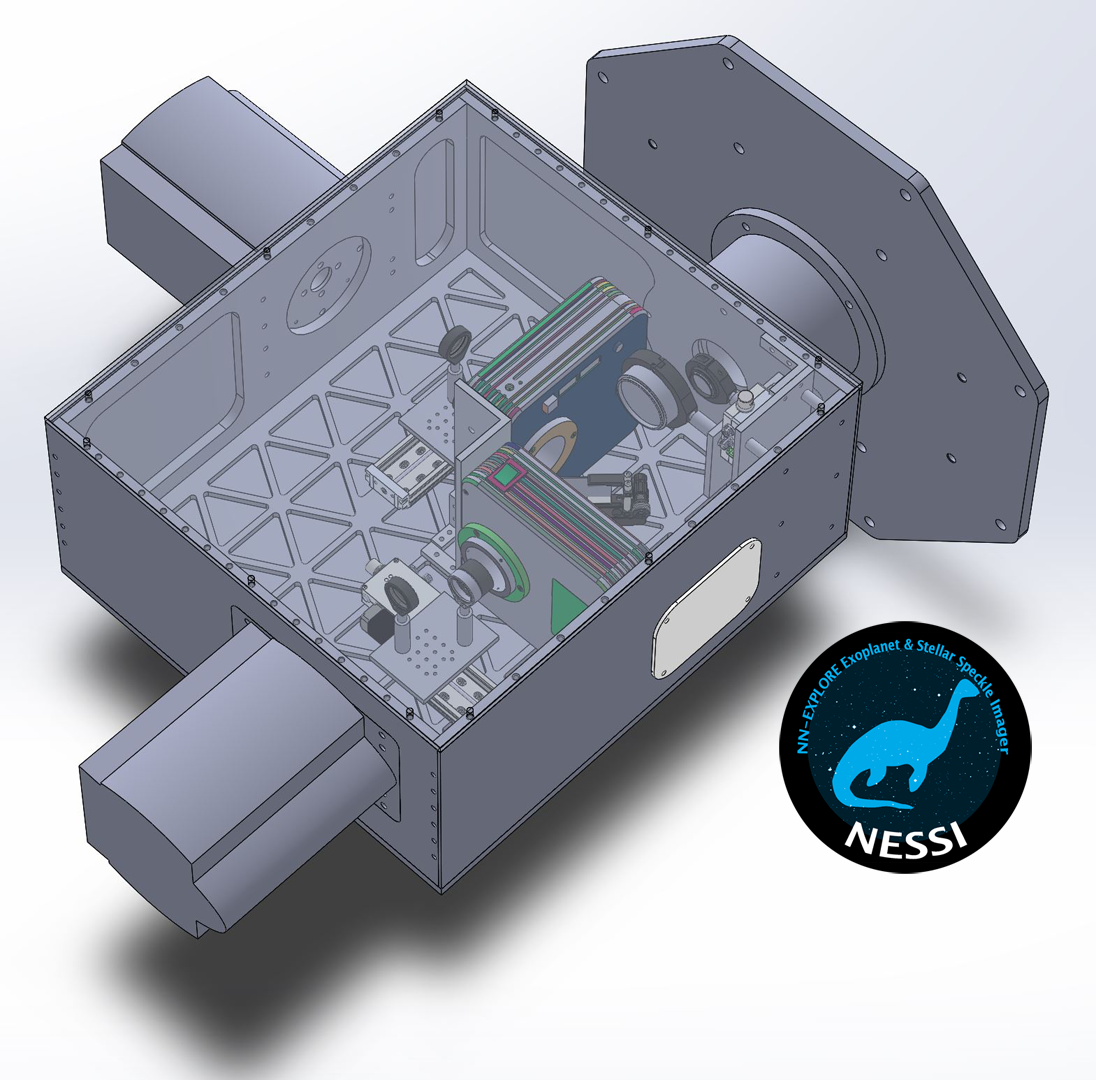




672.9
11
15
17
22
26
mas

-
Quad6 -channel - Wave-front sensing
- 2 near-IR channels
- DSSI heritage at the DCT+NPOI
- novel construction
QWSSI ?

van Belle
Science Programs
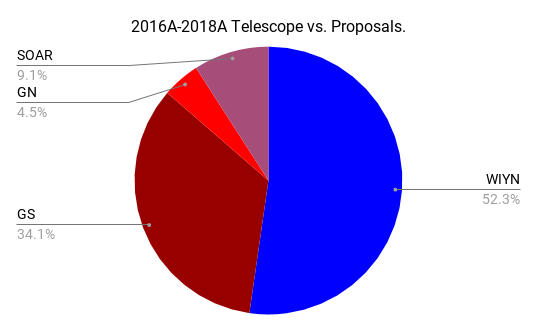
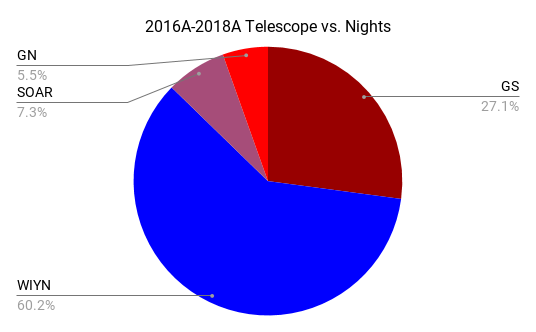
40 total proposals
110.04 total nights
(NOAO 2016A to 2018B)
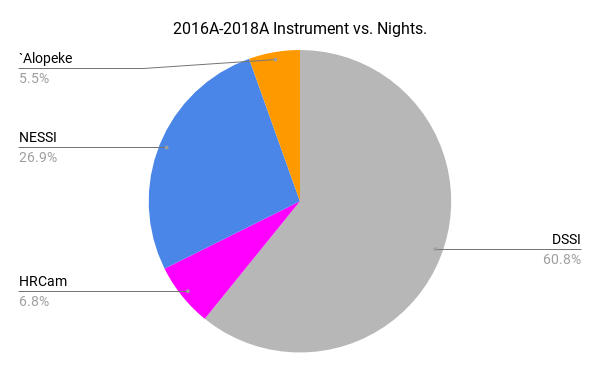

NEAs
- sizes
- radar typically quotes 40% uncertainties
- albedo/radar size mismatch
- shapes
- adapt stellar surface modeling tools
- light curve inversion/illumination model

a~2.8AU
d~270km x 80km
(neck~50-65km)

model: Franck Marchis


Phaethon
Dec 2017 ~ 0.07AU
d~6km


Point source PS
Phaethon power spectrum (resolved)

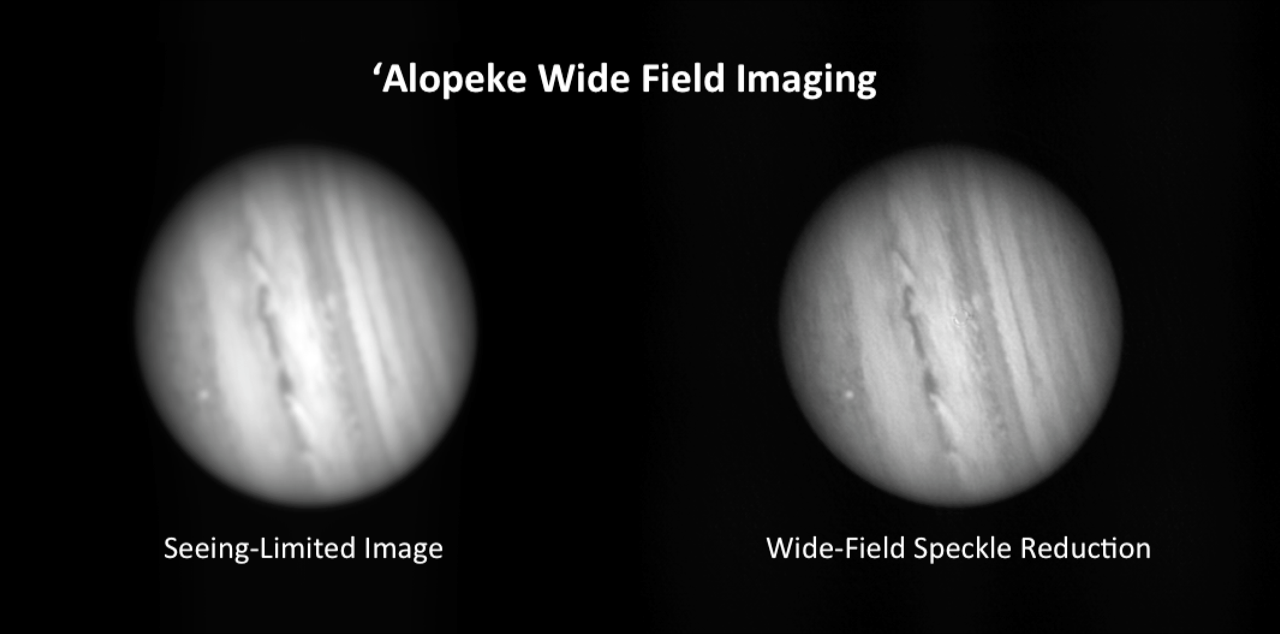
Pluto opposition
SOFIA occultation target duplicity


WF and speckle optics
Conv and EMCCD imaging
466/832 and g/i filters
New Horizons (not us.....yet)
TNO Varda ⌀~700km, d~50au
multiplicity is the single largest source of error to occultation path prediction

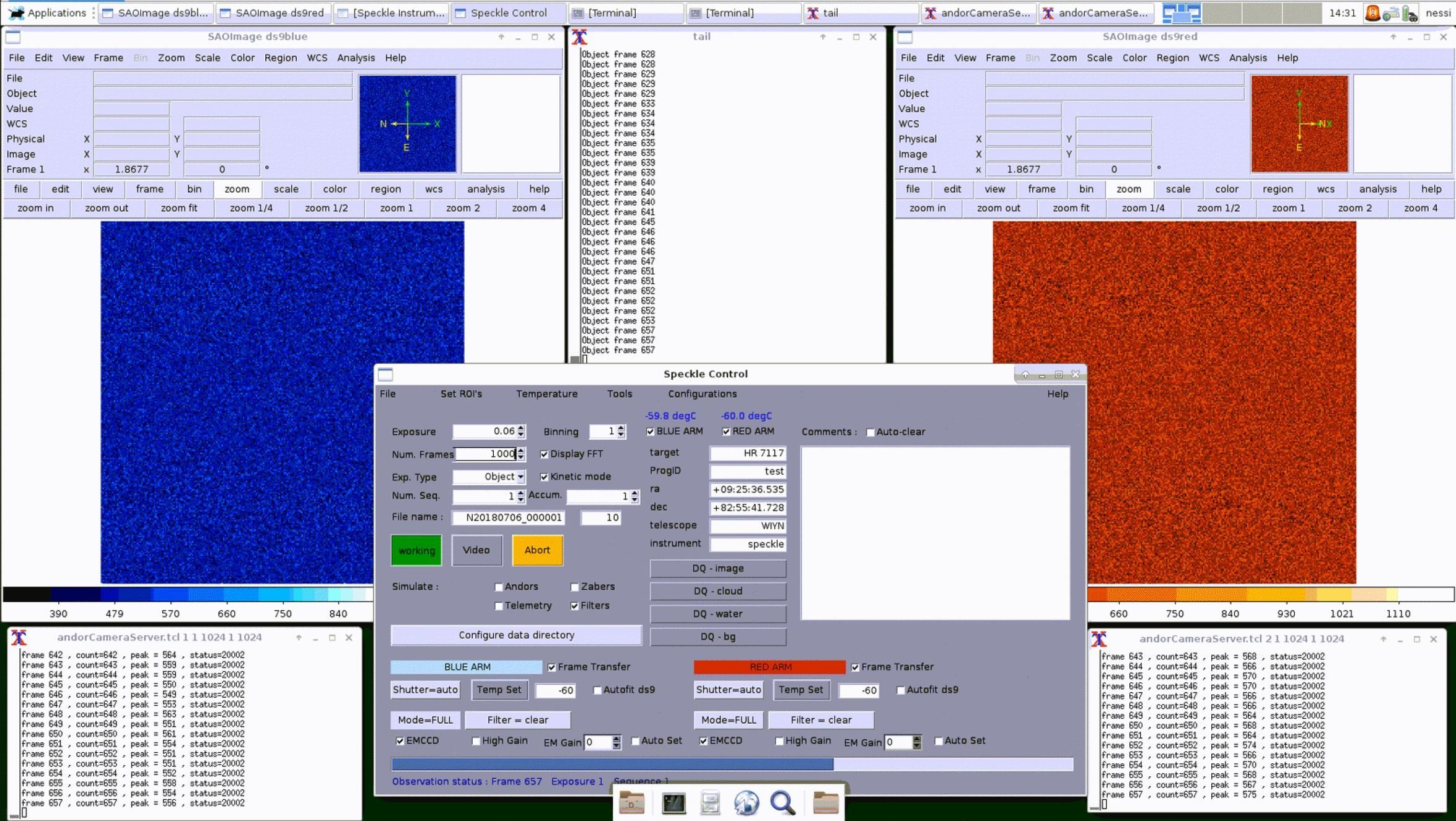
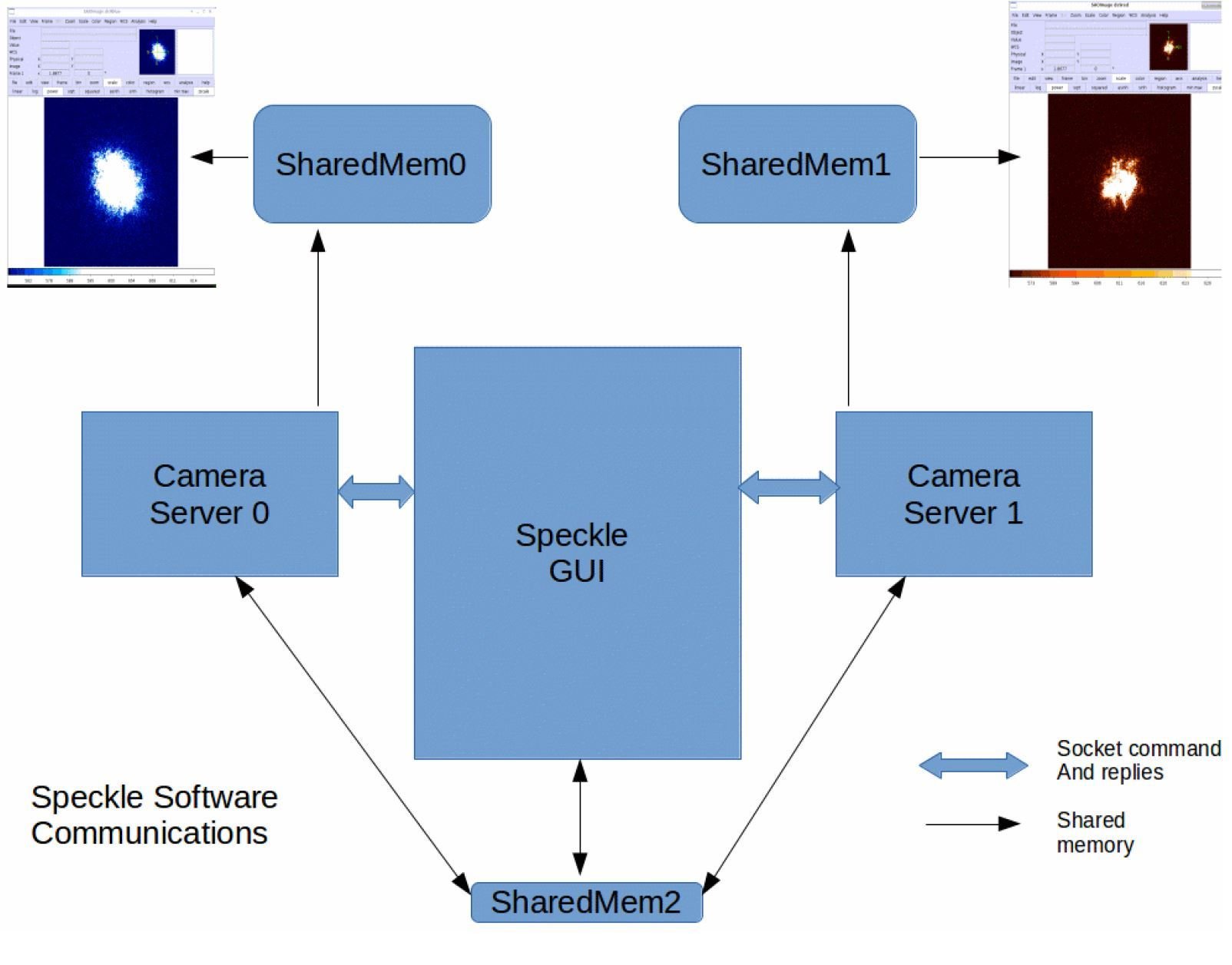
Open to the community
- NOAO proposal process
- NESSI - WIYN@KPNO
- `Alopeke - Gemini-N
- DSSI -> Zorro - Gemini-S
- Transitioning from visitor to ''Resident'' instrument
backup slides
- Constrain NEA diameters. Image SS objects
- Determine multiplicity of nearby K and M-dwarfs, does it vary across spectral type?
- Imaging of brown dwarfs and distant large planets, particularly around M dwarfs
- Investigate differences in planetary system architectures between multiple vs not (known) multiple host stars
- Examine long-term RV trends/determine binarity of RV planet hosts.
- K2, TESS follow-up
- Provide an unbiased sample for TESS, so statistical determinations of planet occurrence rates can be made
- Occultations, transit photometry, pulsar time scales, observe pulsating WDs at high cadence
Some proposals so far:


Seeing-limited
Reconstructed

42''
Two-color wide-field speckle reconstruction
from NESSI
- 0.25'' resolution from 500 frames (20s)
- compromise b/t angres and contrast
- Seeing ~ 0.85''
Urban telescope WF speckle
Wide-field speckle techniques for small, urban telescopes, Nicole M. Granucci, Elliott P. Horch, Southern Connecticut State Univ. (USA) talk Tues (coming up next actually)[10701-20]

Knox & Thompson
cross-spectrum, a 2nd order correlation
1974
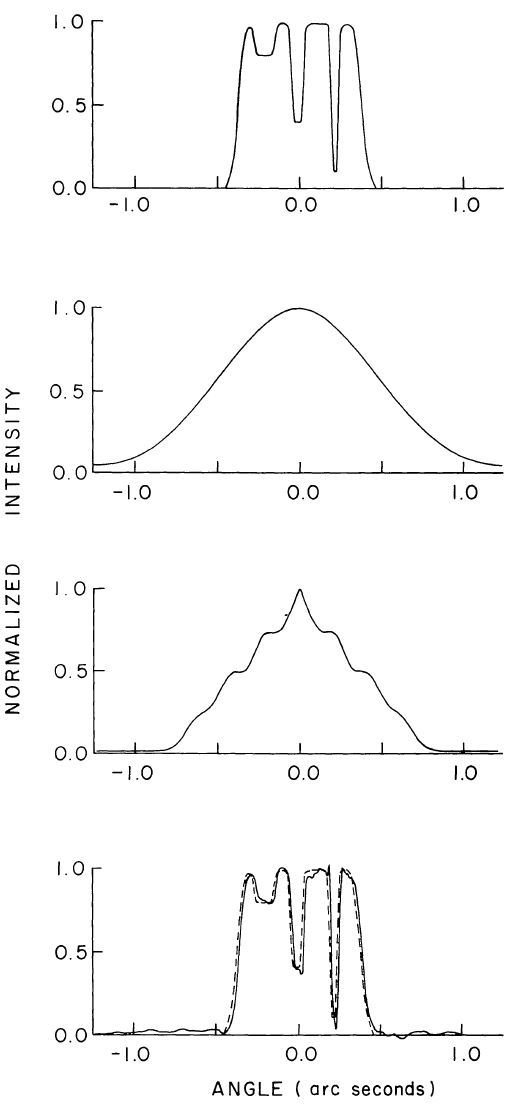
non-symmetric input
long exposure avg
Labeyrie technique
Knox & Thompson method
mean square of the image transform
modulus of the object transform
autocorrelation of the image transform
phase of the object transform
diffraction-limited image of the object
+
An aside on Lucky Imaging
- reaches higher resolution than typical seeing
- does not utilize Fourier analysis
- not capable of reaching the diffraction limit
- requires a very large number of images

http://inspirehep.net/record/823349/plots
Fried
1978
record a large series of images
discard instances of poor resolution
combine the remainder through shift-and-add techniques
Can reach
‘Alopeke - evolution of an instrument line and capabilities
By Nic Scott
‘Alopeke - evolution of an instrument line and capabilities
- 1,673



